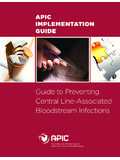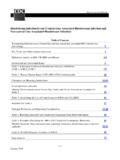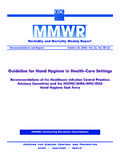Transcription of Central Line Insertion Bundle - sicsag.scot.nhs.uk
1 National Services Scottish Intensive Care Scotland Society Audit Group Central line Insertion Bundle Version i NHS National Services Scotland/Crown Copyright 2012. First published January 2008. Brief extracts from this publication may be reproduced provided the source is fully acknowledged. Proposals for reproduction of large extracts should be addressed to: ISD Scotland Publications Information Services Division NHS National Services Scotland Gyle Square 1 South Gyle Crescent Edinburgh EH12 9EB. Tel: +44 (0)131-275-6233. Email: Designed and typeset by: ISD Scotland Publications Translation Service If you would like this leaflet in a different language, large print or Braille (English only), or would like information on how it can be translated into your community language, please phone 0131 275 6665.
2 Document History Version Date Comment Author QA. 2008/01/09 1st draft of 1st version Dr Stephen Cole 2012/04/18 1st draft of 2nd version Dr Stephen Cole ii Contents Introduction .. iv Central line Insertion v 1. Insertion Checklist and vi 2. Hand Hygiene and Maximal Barrier 3. Catheter Site 4. Skin 5. Dressing ..5. Appendix 1 CVC Insertion Appendix 2 CVC iii Introduction The Central Venous Catheter (CVC) Insertion Bundle and associated tools were first jointly published by SICSAG and HPS in May 2007. A review of the content against the current available guidelines and evidence has now been undertaken by Infection Control Team, Health Protection Scotland to ensure that the key recommendations are still accurate for safe Insertion of CVCs, primarily aimed at the prevention of healthcare associated infections.
3 CVCs are the leading cause of device-related bacteraemia or catheter related blood stream infection (CRBSI), which are a major cause of morbidity, increased severity of illness and prolonged hospital stay. The Scottish National HAI Prevalence Survey (2007) reported of patients have CVCs in situ. This is much higher in Critical Care where 31% of admissions to High Dependency Units and 68% of admissions to Intensive Care Units have a CVC in situ (SICSAG data 2010). The aim of this care Bundle is to improve practices, alongside documented evidence of compliance with evidence based practice aimed at improving patient outcomes. This care Bundle has been agreed by experts in intensive care and infection control, from around Scotland who have considerable experience in their own areas of care Bundle application and infection control through surveillance.
4 The Scottish Patient Safety Programme (SPSP) support the implementation of these recommendations resources. Recommending best practice of this type requires compromise and pragmatism. The following pages explain the rationale and detail each Bundle element that can be measured against, however local adaptation may be deemed appropriate. Auditing compliance with Bundle elements should be undertaken and describing any account of valid clinical exclusions is essential. The full evidence base used to create this Bundle can be found at Critical care aspects related to CVC Insertion include: ensuring the CVC is clinically required, antisepsis at site of Insertion to minimise the risk of microbial seeding at the external surface of the CVC as it is inserted, surgical scrub and use of aseptic technique, barrier precautions and sterile dressings.
5 Iv Central line Insertion Bundle There are five key aspects to this Bundle which if addressed together should minimise the risk of catheter related bloodstream infection. 1. Insertion Checklist and Documentation 2. Hand Hygiene and Maximal Barrier Precautions 3. Catheter Site Selection 4. Skin Antisepsis 5. Dressing v 1. Insertion Checklist and Documentation The operator should be trained to undertake the procedure, be competent, aware of the knowledge and skills required on an ongoing basis, and importantly know the documentation available to record CVC Insertion information. This supports improvement of patient safety/culture change, and it is clear that there are ways to make it easy for healthcare workers to adhere to these requirements. The recommendation that details of Insertion are documented in records (including date, location, catheter lot number and signature and name of operator undertaking Insertion ) is based on good practice.
6 It is also beneficial in ensuring that other evidence based CVC care actions can be supported review of clinical need and requirement for dressing changes. Measurement criteria: Ensure information on the Insertion procedure is fully documented, preferably using a sticker in the case notes (See Appendix 1). Reference DH. High Impact Intervention: Central venous catheter care Bundle . 2011. vi 2. Hand Hygiene and Maximal Barrier Precautions The operator inserting a Central venous catheter should adhere to strict aseptic technique (with surgical scrub performed immediately before donning gloves and gown). Sterile gloves, gown, theatre hat and surgical mask should be worn as well as a sterile drape, with compliance against these recommendations monitored and recorded.
7 Measurement criteria: Ensure that a surgical scrub is performed immediately before donning maximal sterile barrier precautions ( gloves and gown). Ensure that maximal sterile barrier precautions are used by the healthcare workers, including headwear, mask, sterile gown and sterile gloves and a sterile body drape for the patient. References Raad, Hohn et al: Prevention of CVC related infections by use of maximal barrier precautions during Insertion . 1994 15 231-238. Tanner J. Surgical hand antisepsis: the evidence. J Perioper Pract 2008 Aug;18(8):330-4, 339. O'Grady NP, Alexander M, Burns LA, Dellinger EP, Garland J, Heard SO, et al. Guidelines for the Prevention of Intravascular Catheter-related Infections. Clin Infect Dis 2011 Apr 1. 1. 3. Catheter Site Selection In adult patients there is some evidence that the subclavian site has a lower risk of catheter related blood stream infections.
8 Guidelines recommend that unless medically contraindicated, use the subclavian site in preference to the jugular or femoral sites for non-tunnelled catheter placement'. However it is also recommended that the risks and benefits of placing a Central venous device at a recommended site to reduce infectious complications are weighed up against the risk for mechanical complications. Therefore, the decision needs to take into account the skill of staff undertaking the procedure. Experience is usually greater with Insertion at the internal jugular site and therefore can be safer. The subclavian, or internal jugular route, are undoubtedly the preferred sites for preventing avoidable infections. Measurement criteria: Ensure that the subclavian site or internal jugular vein is used if possible (the femoral site should be avoided whenever possible).
9 Additional related good practice considerations: the coagulation status the site of other lines the potential for pneumothorax operator skill and the use of ultrasound guidance. References Pratt RJ, Pellowe CM, Wilson JA, Loveday HP, Harper PJ, Jones SR, et al. epic2: National evidence- based guidelines for preventing healthcare-associated infections in NHS hospitals in England. J. Hosp Infect 2007 Feb;65 Suppl 1:S1-64. O'Grady NP, Alexander M, Burns LA, Dellinger EP, Garland J, Heard SO, et al. Guidelines for the Prevention of Intravascular Catheter-related Infections. Clin Infect Dis 2011 Apr 1. Deshpande KS, et al. The incidence of infectious complications of Central venous catheters at the subclavian, internal jugular, and femoral sites in an intensive care population.
10 Crit Care Med. 2005;33:13-20. Ruesch S, et al. Complications of Central venous catheters: Internal jugular versus subclavian access - A systematic review. Crit Care Med 2002; 30:454-460. 2. 4. Skin Antisepsis Infection can arise from microorganisms which are present on the patient's skin. Antisepsis of the Insertion site is therefore crucial in minimising the risk of microbial seeding the external surface of the CVC as it is inserted or of migrating down the lumen post Insertion and resulting in biofilm production leading to infection. This can involve the use of antiseptics such as chlorhexidine and povidone-iodine. Chlorhexidine is known to have a persistent effect and combined with alcohol which is fast drying make 2%. chlorhexidine in 70% isopropyl alcohol a suitable product.







